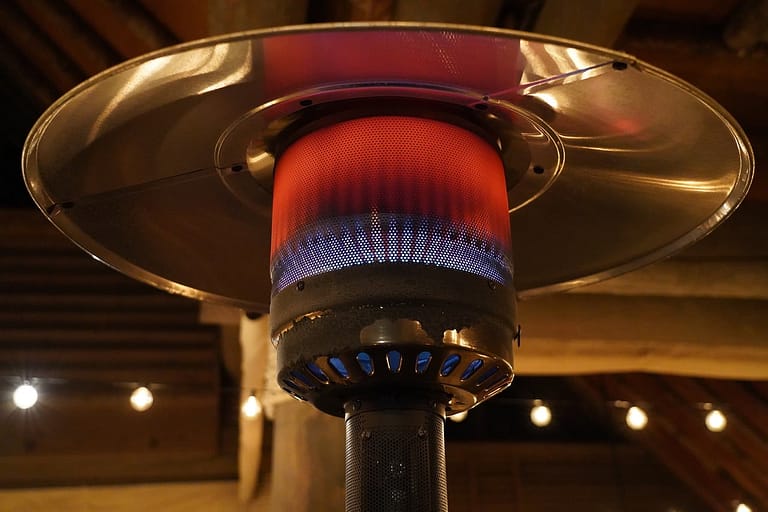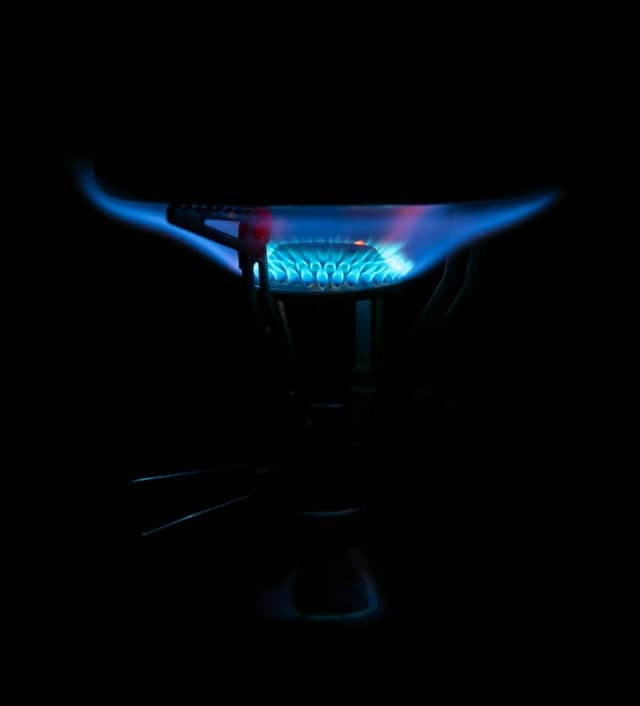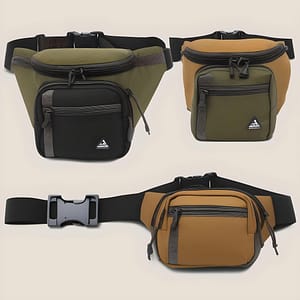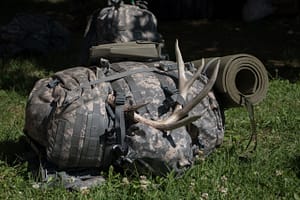You suggested to two of your best friends that you go camping in February, and they were on board with the idea. A few days later, even though it’s only September, you asked your boss for a week off, and she she’s cool with it. You’ve already found a location, gathered most of the required gear, but now you’re wondering how to survive the week without getting frostbite. Luckily, there are several effective ways to heat a tent, one of which is using propane. In this blog, we will provide you with essential tips on safely heating a tent with propane. From choosing the right heater to operating it correctly, our expert advice will help ensure a comfortable camping experience. So let’s dive in and discover the best practices for staying warm while enjoying a great winter camping trip.
Choosing the Right Propane Heater

Choosing the right propane heater is crucial when it comes to safely heating a tent. Consider the size of your tent before making a purchase, as larger tents may require more powerful heaters for effective heat distribution. Look for safety features such as automatic shut-off valves and tip-over protection to ensure peace of mind during use. Additionally, check for proper ventilation in the heater design to prevent carbon monoxide buildup inside the tent.
Consider the size of your tent
Calculate the cubic footage of your tent to ensure proper heating. Choosing a heater that is suitable for the size of your tent is crucial for effective and safe heat distribution. Take into account the dimensions and height of your tent when determining the appropriate heater capacity, ensuring proper heating without overloading the space.
Look for safety features
Look for safety features when using a propane heater to heat your tent. Ensure that the heater has automatic shut-off capabilities, which will help prevent accidents if it overheats. Choose a propane heater with a tip-over switch as an added precaution against fires caused by accidental tipping. It is also important to verify if there is an oxygen depletion sensor in the heater, which will detect low oxygen levels and automatically shut off the device.
- Check if the heater has automatic shut-off capabilities
- Select a propane heater with a tip-over switch
- Verify if there is an oxygen depletion sensor
Check for proper ventilation
Inspect your tent for any openings or vents to ensure proper ventilation. These openings allow fresh air to enter and prevent the accumulation of carbon monoxide. Additionally, make sure there is sufficient airflow in and out of the tent, as this helps dissipate any heat generated by the propane heater. To further enhance safety, consider using carbon monoxide detectors inside the tent to monitor gas levels and provide an early warning in case of any potential leaks or hazards.
Preparing the Tent for Heating
Clearing the area around the heater is crucial for safely heating a tent with propane. Remove any flammable materials or objects within a three-foot radius of the heater to prevent potential fire hazards. Additionally, ensure that there are no obstructions that could block the flow of heat or cause overheating.
Setting up a fire-resistant base is an important step in preparing the tent for heating. Place a non-flammable material such as a metal sheet or fireproof mat underneath the heater to protect against accidental spills and sparks. This will provide an added layer of safety and help prevent any damage to the tent floor.
Creating proper airflow inside the tent is essential when using propane heaters. Open ventilation panels, windows, or doors to allow fresh air circulation while maintaining enough warmth. This helps minimize carbon monoxide buildup and ensures safe breathing conditions for everyone inside.
Clear the area around the heater
Remove any flammable materials within a three-foot radius to prevent accidents. Ensure there are no hanging fabrics, curtains, or decorations near the heater as they can easily catch fire. Keep children and pets away from the heating area to avoid any injuries or damage.
Set up a fire-resistant base
Place a non-flammable mat or heat-resistant material underneath the propane heater to prevent accidental ignition. Avoid placing the heater directly on grass or other combustible surfaces that can catch fire easily. Use sandbags to stabilize and protect against accidental tipping, ensuring that the heater stays secure in place.
- Place a non-flammable mat or heat-resistant material underneath
- Avoid placing the heater directly on grass or other combustible surfaces
- Use sandbags for stability and protection against tipping
Create proper airflow
Open windows or vents in the tent to ensure fresh air circulation, preventing stuffiness and maintaining oxygen levels. Position fans strategically throughout the space to distribute warm air evenly, maximizing heating efficiency. Remember to never block exhaust vents as this can lead to dangerous carbon monoxide buildup, posing a serious health risk.
Operating the Propane Heater Safely
1. Follow manufacturer’s instructions carefully: Before using a propane heater to heat your tent, it is crucial to read and understand the manufacturer’s instructions. Each heater may have specific requirements and precautions that need to be followed for safe operation.
2. Keep the area around the heater clear of flammable materials: To prevent accidents, ensure that there are no flammable objects or substances near the propane heater. Maintain a safe distance between the heater and any potential hazards such as curtains, bedding, or clothing. Regularly check for any debris or combustible items in close proximity to avoid fire risks.
Read the manufacturer’s instructions
Most of us don’t like to read the manufacturer’s instructions, rightfully so. They are sometimes too long, full of too technical words and even when you do exactly what is written it doesn’t work out for you. I used the F word many times while trying to do what was written in the instructions. But, understand the heater’s specific safety guidelines is important to ensure safe operation. Follow the recommended operating procedures provided by the manufacturer to avoid any potential hazards. Ensure proper ventilation requirements are met to prevent carbon monoxide buildup.
- Familiarize yourself with the safety guidelines of your propane heater
- Adhere to the recommended operating procedures outlined by the manufacturer
- Maintain adequate ventilation in your tent area to prevent carbon monoxide accumulation
Keep the heater away from flammable materials
Maintain a safe distance from tent fabric and bedding to prevent potential fire hazards. Clear any clutter or combustible objects nearby to create a safer environment. Avoid placing the heater near flammable liquids or gases that could easily ignite, ensuring the utmost safety while heating your tent with propane.
Monitor the heater at all times
Never leave an active propane heater unattended in a tent. It is essential to ensure that someone is always present to monitor the heater and address any potential issues immediately. Regularly check for signs of malfunction or damage, such as strange smells, unusual noises, or faulty ignition. Be cautious of carbon monoxide buildup and use detectors if necessary to keep the air inside the tent safe and breathable. Your safety should always be a top priority when heating a tent with propane.
How long does it take to heat a tent with propane?
In general, a propane heater can start to provide warmth within a few minutes of being turned on. However, for the tent to reach a comfortable temperature, it may take anywhere from 10 to 30 minutes or longer, depending on the aforementioned factors. A larger tent or colder outside temperatures may require more time for the heat to spread evenly and warm up the entire space.
Factors such as the insulation of the tent and the presence of any drafts or air leaks can significantly impact the heating time. A well-insulated tent with minimal air leaks will heat up more efficiently and retain the warmth for a longer period.
The type and size of the propane heater also play a role in heating time. Portable propane heaters come in various sizes and heating capacities. The higher the BTU (British Thermal Unit) rating of the heater, the faster it can generate heat. However, it is crucial to ensure that the heater is suitable for indoor use and meets safety standards.
Moreover, it is important to note that while propane heaters can effectively warm up a tent, they also consume fuel quickly. The duration of heat provided by a propane tank depends on the tank’s size and the heat setting on the heater.
How much propane do you need to heat a tent?

When it comes to heating a tent with propane, several factors come into play which will determine how much propane you need. These factors include the size of the tent, the outside temperature, insulation, wind conditions, and personal comfort preferences. While a precise answer may be challenging due to the varying circumstances, I can provide you with some general guidelines to help estimate the amount of propane required.
1. Tent Size: The size of the tent will have a significant impact on the amount of propane needed. Larger tents will require more heat to maintain a comfortable temperature compared to smaller ones. Consider measuring the dimensions of your tent to determine its square footage, as this will help in calculating the propane requirement more accurately.
2. Outside Temperature: The colder the outside temperature, the more propane you will need to heat the tent. Keep in mind that propane heaters are typically more effective in enclosed spaces, so the outside temperature will still affect the heat loss through the tent’s walls and floor.
3. Insulation: The insulation properties of your tent will play a vital role in heat retention. A well-insulated tent will require less propane compared to a tent with poor insulation. Look for tents with adequate insulation or consider adding insulating layers to reduce heat loss.
4. Wind Conditions: Wind can significantly affect the heat distribution and increase heat loss from the tent. If you expect windy conditions, you may need to account for additional propane consumption to compensate for the heat loss caused by the wind.
5. Personal Comfort Preferences: It’s important to think about the desired temperature inside the tent and how warm or cool you prefer it to be. Some individuals may be comfortable with a lower temperature and require less propane, while others may prefer a warmer environment and need more propane to achieve their desired level of comfort.
To estimate the amount of propane needed based on personal comfort preferences, you can consider the following factors:
1. Target Temperature: Determine the temperature you want to maintain inside the tent. This will depend on individual preferences, but a comfortable range is typically between 60-70 degrees Fahrenheit (15-21 degrees Celsius). The larger the temperature difference between the inside and outside of the tent, the more propane will be required to achieve and maintain that temperature.
2. Duration of Use: How long do you plan on using the heater? If you only need heat for a short period, you may need less propane compared to a longer duration. Consider the duration of your camping trip or the specific hours you’ll be spending inside the tent.
3. Heat Output of the Heater: The heat output of the propane heater, measured in BTUs (British Thermal Units), will also impact the propane consumption. Higher BTU ratings indicate a higher heat output, which can warm up the tent faster but may require more propane.
Can you use a propane heater to cook in a tent?
When planning outdoor adventures, it’s essential to consider cooking methods, especially if camping in colder climates. While propane heater may seem like a convenient option, it is not specifically designed for cooking purposes. These are the Safety Concerns:
1. Combustion by-products: Propane heaters release carbon monoxide (CO), a colorless, odorless gas that can be deadly in high concentrations. Cooking in a confined space like a tent may increase the risk of CO poisoning.
2. Fire hazards: Propane heaters generate intense heat and have an open flame, which poses a fire hazard in an enclosed area like a tent. The potential for accidents, such as knocking over the heater or flammable materials getting too close, is heightened.
3. Lack of stability: Propane heaters are not designed with stability in mind for cooking purposes. Pots and pans may not sit securely on the heater, leading to spills or accidents.
Alternative Cooking Options:
1. Camp stoves: Portable camp stoves specifically made for cooking are a safer and more suitable option. They are designed with stability, wind resistance, and safety features in mind. Look for stoves with built-in windshields and automatic shut-off valves.
2. Fire pits: Fire pits can be a great alternative for cooking while camping, as long as they are used safely and responsibly. Here are some important considerations and tips for using fire pits for cooking in a tent:
1. Location: When setting up a fire pit for cooking, choose a safe and suitable location. Ensure that the fire pit is placed on a stable surface and at a safe distance from the tent, trees, and other flammable materials. Follow any local regulations or guidelines regarding fire pit usage.
2. Fire Safety: Before starting a fire in the pit, make sure you have a sufficient supply of water or a fire extinguisher nearby. Never leave the fire unattended and ensure it is completely extinguished before leaving the campsite or going to bed. Use designated fire rings or fire pits whenever possible.
3. Cooking Equipment: Use appropriate cooking equipment designed for fire pit cooking. Cast iron cookware is a popular choice as it can withstand high heat and distribute it evenly. Avoid using non-stick pans or plastic utensils that may melt or release harmful chemicals when exposed to heat.
Here You Can Find – The Best Camping Meals
What’s the difference propane heater and vented propane heater ?
A vented propane heater and a propane heater have some differences in terms of their design and functionality.
A vented propane heater is specifically designed to be used in enclosed spaces such as tents or cabins. It has a built-in ventilation system, typically in the form of a vent or chimney, which allows for the safe release of combustion byproducts, including carbon monoxide. This helps to prevent the buildup of harmful gases inside the enclosed space. Vented propane heaters often have additional safety features such as automatic shut-off valves that can detect low oxygen levels or tip-overs.
On the other hand, a propane heater is a more general term that can refer to various types of heaters that use propane as a fuel source. These heaters may not have built-in ventilation systems, and therefore, are not suitable for use in enclosed spaces like tents. They are designed for outdoor use or in well-ventilated areas where the combustion byproducts can disperse safely into the open air.
Staying Safe While Using a Propane Heater
When using a propane heater to heat your tent, it is crucial never to leave the heater unattended. Always keep an eye on the heater and ensure someone responsible is present at all times. Additionally, make sure to use a carbon monoxide detector in the vicinity of the heater. This will help you detect any potential leaks and prevent dangerous levels of carbon monoxide from accumulating in your tent. Lastly, always have a fire extinguisher nearby in case of emergencies. Being prepared with these safety measures ensures that you can enjoy safe and cozy heating while camping.
Never leave the heater unattended
Designate a responsible person to monitor the heater at all times. Create a schedule for rotating monitoring duties among tent occupants. Ensure that children or pets are never left alone near the heater.
- Assign someone to be in charge of supervising the heater continuously.
- Establish a rotation system, so everyone takes turns monitoring the heater.
- Keep children and pets away from the vicinity of the heater at all times.
Use a carbon monoxide detector
Invest in a reliable carbon monoxide detector with an audible alarm to ensure your safety while heating a tent with propane. Place the detector in close proximity to the propane heater for quick detection of any potential leaks or buildup of harmful gases. Regularly check and replace batteries in the carbon monoxide detector to guarantee its proper functioning at all times.
Have a fire extinguisher nearby
Choose an appropriate type of fire extinguisher for handling propane fires. Propane fires require a Class B fire extinguisher, as it is specifically designed to handle flammable liquids and gases. Ensure that you have the right type of fire extinguisher in case of emergencies.
Store the fire extinguisher within quick reach of the heating area. It is crucial to keep the fire extinguisher easily accessible in case a propane-related incident occurs. Place it near the heating area so that everyone can quickly grab it without wasting precious time.
Train everyone on how to properly use a fire extinguisher. Instruct all occupants on how to operate a fire extinguisher correctly before using any propane-based heating system. This training will ensure they are prepared and confident enough to react promptly during an emergency situation involving propane fires.
A few more tips on how to stay warm in winter
Dress properly for cold weather
Wearing the right clothing is crucial when facing cold weather. Here are some tips to help you dress properly:
- Wear layers to trap heat
- Use thermal underwear and socks
- Wear a hat and gloves
By following these simple guidelines, you can stay warm and comfortable in even the coldest temperatures.
Use a tent with good insulation
Choose a tent made of insulated materials for maximum heat retention. The insulation will help keep warmth inside the tent and prevent cold air from seeping in. Look for tents with double-wall construction, as this design provides an extra layer of insulation by creating a barrier between the outer and inner walls of the tent. Additionally, consider using an insulating ground pad or carpet inside the tent to further enhance its insulation properties and protect against heat loss through contact with the ground.
Consider alternative heating methods
Investing in portable electric heaters designed specifically for tents can provide a safe and efficient way to heat your camping space. These heaters are compact, easy to use, and often come with safety features such as automatic shut-off systems. Additionally, utilizing hot water bottles or hand warmers can offer localized heat that is both cost-effective and convenient. Lastly, exploring the option of heated sleeping bags or blankets can provide an extra layer of warmth during those chilly nights outdoors. Consider these alternative heating methods to ensure a cozy and comfortable camping experience.
In conclusion, staying warm during winter camping trips is essential for your comfort and safety. By following the tips mentioned in this blog post, such as using propane-based heating systems safely, dressing properly for cold weather, choosing a tent with good insulation, and considering alternative heating methods, you can ensure a cozy and enjoyable camping experience. Remember to prioritize safety and be prepared for any emergency situations that may arise. Stay warm and have a great winter camping adventure!





